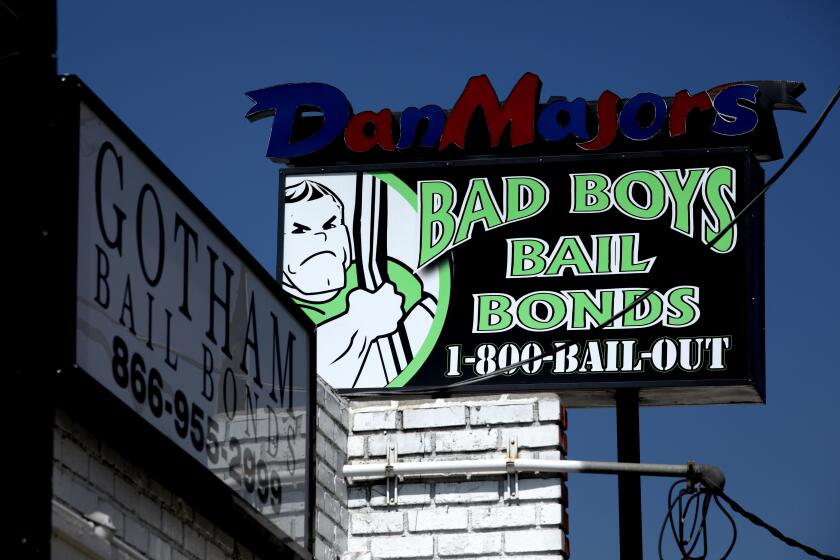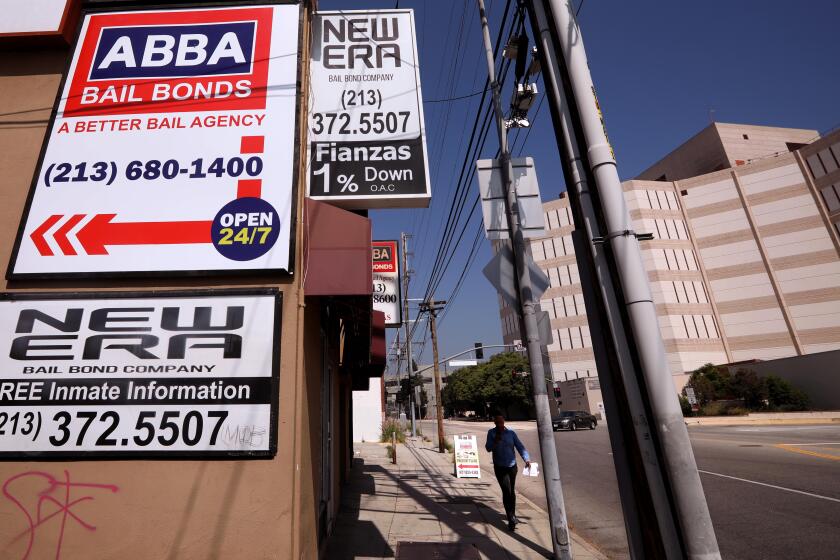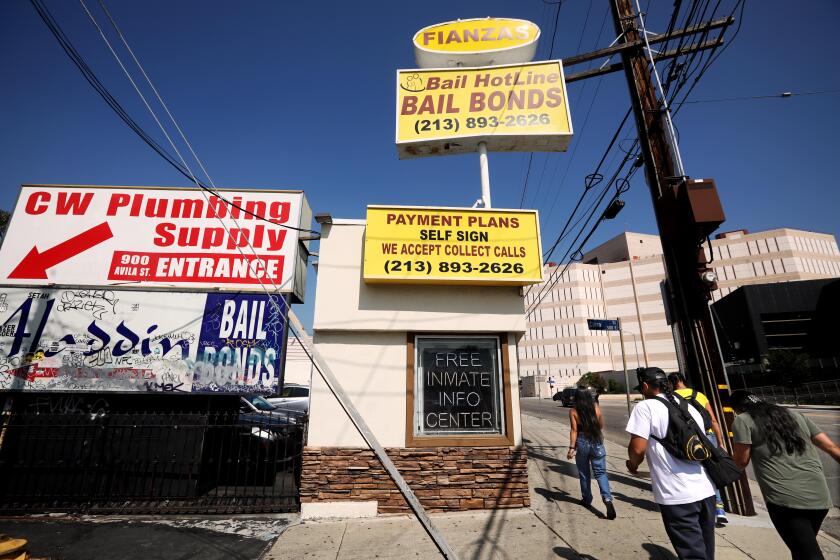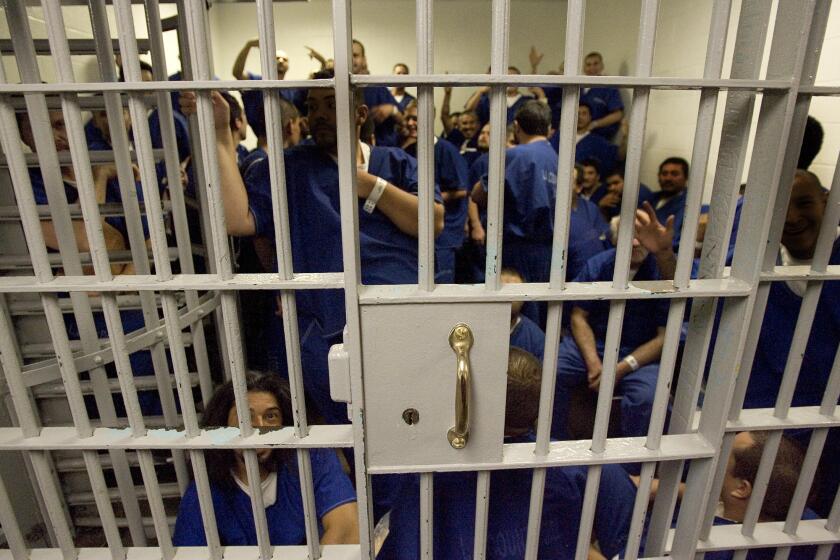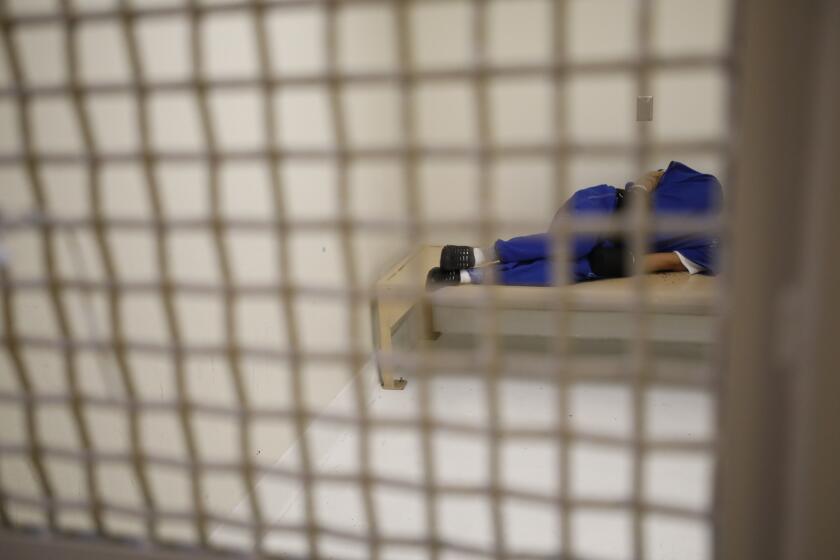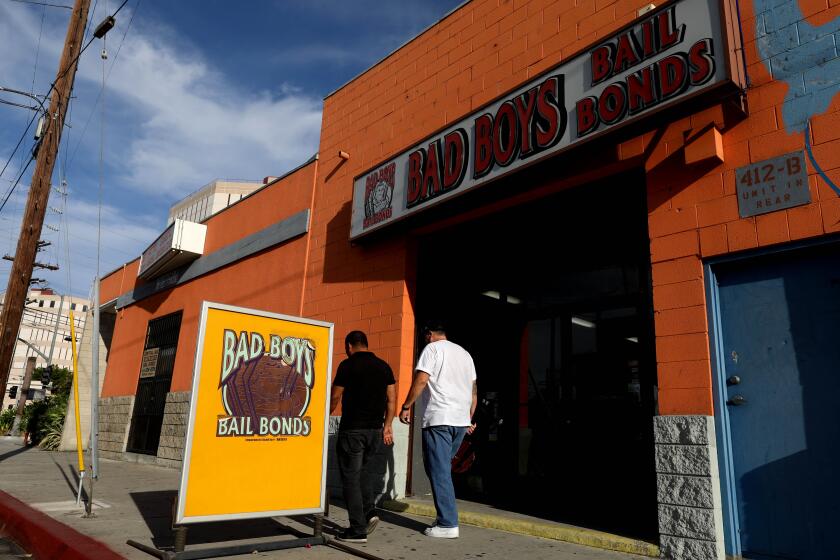Ending Cash Bail
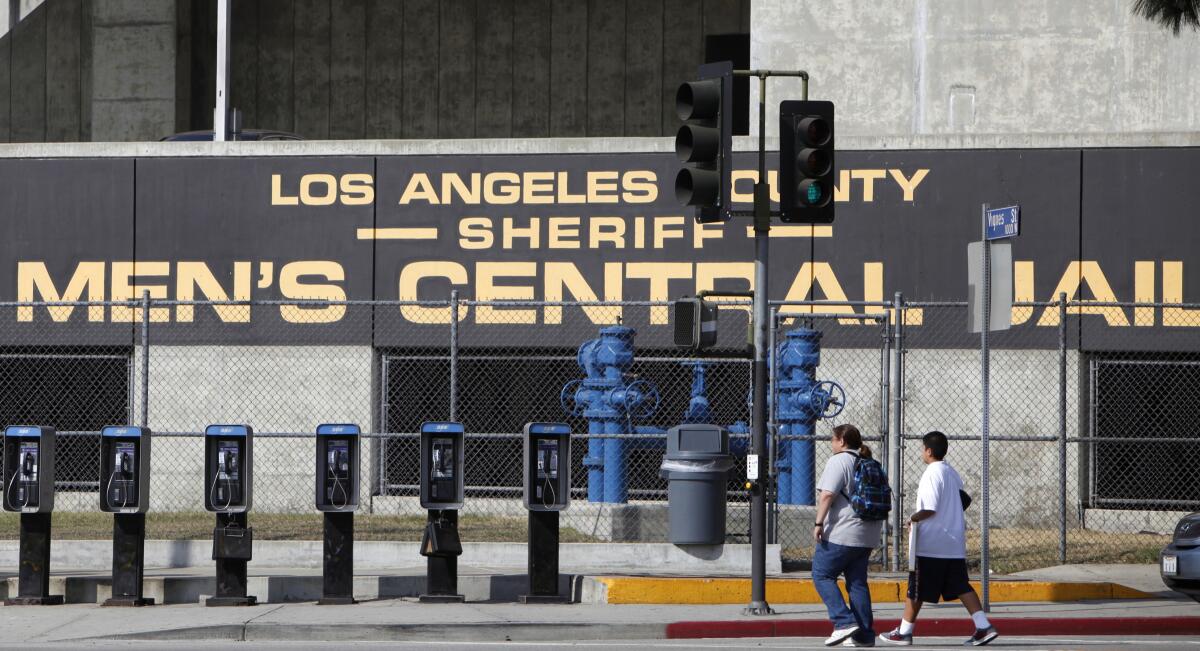
Men’s Central Jail in Los Angeles in 2011.
(Damian Dovarganes / Associated Press)
On Oct. 1 Los Angeles County transitions to a new way of administering pre-arraignment justice that doesn’t use cash bail for most crimes. The Times editorial page is examining these and other aspects of L.A. bail reform, including the data on crime, the pushback by police and others who demand that punishment begin before trial, the confusion over basic terms, and the need for more action and backbone among elected leaders on criminal justice issues.
